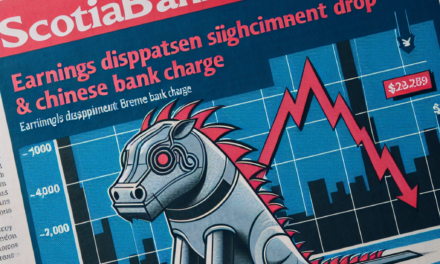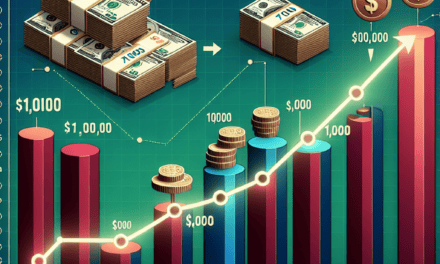“Ex-BOJ Board Member Signals Higher Odds for March Rate Hike.”
Introduction
Former Bank of Japan (BOJ) board member, in a recent analysis, has indicated a heightened probability of an interest rate increase in March. This prediction comes amid evolving economic conditions and inflationary pressures that have prompted discussions about monetary policy adjustments. The insights from the ex-board member reflect a growing consensus among economists regarding the need for the BOJ to reconsider its longstanding ultra-loose monetary stance, particularly as global economic dynamics shift and domestic inflation trends show signs of persistence.
Ex-BOJ Board Member’s Insights on March Rate Increase
In recent discussions surrounding Japan’s monetary policy, the insights of a former member of the Bank of Japan (BOJ) board have garnered significant attention, particularly regarding the potential for a rate increase in March. This prediction comes at a time when the global economic landscape is undergoing considerable shifts, prompting central banks worldwide to reassess their strategies. The ex-BOJ board member, drawing on extensive experience and a deep understanding of economic indicators, suggests that the likelihood of a rate hike in March has notably increased.
To comprehend the implications of this forecast, it is essential to consider the broader economic context. Japan has been grappling with low inflation and stagnant growth for years, leading the BOJ to adopt an ultra-loose monetary policy characterized by negative interest rates and aggressive asset purchases. However, recent data indicating a gradual rise in inflation and a tightening labor market have sparked discussions about the sustainability of such policies. The former board member emphasizes that these trends could compel the BOJ to reconsider its stance, particularly if inflation continues to exceed expectations.
Moreover, the ex-board member points to the influence of external factors, such as global interest rate trends and geopolitical developments. As central banks in major economies, including the United States and the Eurozone, signal intentions to tighten monetary policy, Japan may find itself under pressure to follow suit. This interconnectedness of global markets means that Japan’s economic health is increasingly tied to international dynamics. Consequently, the former board member argues that a rate increase in March could serve as a signal of Japan’s commitment to aligning its monetary policy with global standards, thereby enhancing investor confidence.
Transitioning from the macroeconomic perspective to the implications for domestic markets, the potential rate increase could have far-reaching effects on various sectors. For instance, the financial sector, particularly banks, may benefit from higher interest rates, which could improve their profit margins. Conversely, borrowers may face increased costs, leading to a potential slowdown in consumer spending and investment. The ex-BOJ board member cautions that while a rate hike could stabilize inflation, it is crucial to balance this with the need to support economic growth. Therefore, the timing and magnitude of any rate increase will be critical in determining its overall impact on the economy.
In addition to economic indicators, the former board member highlights the importance of public sentiment and expectations. The BOJ has long struggled with the challenge of anchoring inflation expectations among consumers and businesses. A well-communicated rate increase could help reinforce the central bank’s commitment to achieving its inflation target, thereby fostering a more stable economic environment. However, the ex-board member warns that missteps in communication could lead to market volatility and undermine the BOJ’s credibility.
In conclusion, the insights of the ex-BOJ board member provide a compelling perspective on the potential for a rate increase in March. As Japan navigates a complex economic landscape marked by both domestic and international pressures, the decision to adjust interest rates will require careful consideration of various factors. Ultimately, the path forward will depend on the BOJ’s ability to balance the need for monetary tightening with the imperative of sustaining economic growth, all while maintaining public confidence in its policies. As the situation unfolds, market participants and policymakers alike will be closely monitoring developments in the lead-up to March, eager to gauge the BOJ’s next move.
Implications of a Potential Rate Hike in March
The potential for a rate hike by the Bank of Japan (BOJ) in March has garnered significant attention, particularly in light of recent comments from a former board member. This prediction not only reflects the evolving economic landscape in Japan but also carries substantial implications for various sectors of the economy. As the BOJ navigates the delicate balance between stimulating growth and controlling inflation, the prospect of an interest rate increase could reshape financial markets, consumer behavior, and overall economic stability.
To begin with, an increase in interest rates typically signals a tightening of monetary policy, which can have immediate effects on borrowing costs. For consumers, higher rates may translate into increased expenses for loans and mortgages, potentially dampening consumer spending. This is particularly relevant in a country like Japan, where household consumption plays a crucial role in driving economic growth. If consumers anticipate higher borrowing costs, they may choose to delay significant purchases, such as homes or automobiles, thereby slowing down economic momentum. Consequently, businesses that rely on consumer spending could face challenges, leading to a ripple effect throughout the economy.
Moreover, the implications of a rate hike extend beyond consumer behavior; they also impact businesses and their investment strategies. Companies often rely on borrowing to finance expansion and operational costs. As interest rates rise, the cost of capital increases, which may lead firms to reconsider their investment plans. This could result in a slowdown in capital expenditures, ultimately affecting job creation and wage growth. In a broader context, if businesses scale back on investments, it could hinder productivity improvements and innovation, which are essential for long-term economic growth.
In addition to domestic implications, a potential rate increase in Japan could influence global financial markets. As the BOJ adjusts its monetary policy, investors may reassess their portfolios, leading to fluctuations in currency values and capital flows. A stronger yen, for instance, could impact Japan’s export competitiveness, as Japanese goods become more expensive for foreign buyers. This scenario could pose challenges for exporters, particularly in industries that are heavily reliant on international markets. Furthermore, shifts in investor sentiment may lead to volatility in stock markets, as market participants react to changing interest rate expectations.
Transitioning to the broader economic context, the decision to raise rates would also reflect the BOJ’s assessment of inflationary pressures. If inflation continues to rise, the central bank may feel compelled to act to prevent the economy from overheating. However, this approach must be carefully calibrated, as premature tightening could stifle growth and lead to a recession. Therefore, the BOJ’s decision-making process will likely involve a thorough analysis of economic indicators, including inflation rates, employment figures, and global economic conditions.
In conclusion, the potential for a rate hike in March carries significant implications for Japan’s economy. From influencing consumer behavior and business investment to affecting global financial markets, the ramifications of such a decision are far-reaching. As stakeholders closely monitor the BOJ’s actions, the interplay between monetary policy and economic performance will remain a critical area of focus. Ultimately, the effectiveness of any rate increase will depend on the central bank’s ability to navigate these complexities while fostering a stable and sustainable economic environment.
Historical Context of BOJ Rate Changes
The Bank of Japan (BOJ) has a long and complex history of monetary policy adjustments, particularly concerning interest rates. Understanding this historical context is essential for grasping the implications of recent predictions regarding potential rate increases. Since the early 1990s, Japan has grappled with economic stagnation, deflationary pressures, and an aging population, all of which have significantly influenced the BOJ’s policy decisions. In response to these challenges, the central bank has employed a variety of unconventional monetary policy tools, including zero interest rate policies and quantitative easing, to stimulate economic growth.
In the late 1990s, the BOJ first introduced a zero interest rate policy, a groundbreaking move aimed at combating deflation and reviving economic activity. This policy marked a significant departure from traditional monetary policy frameworks, as it sought to encourage borrowing and spending by making money cheaper to obtain. However, despite these efforts, Japan’s economy continued to struggle, leading to a prolonged period of low growth and persistent deflation. As a result, the BOJ found itself in a position where it had to continually reassess its strategies to foster economic recovery.
The introduction of quantitative easing in the early 2000s further exemplified the BOJ’s commitment to unconventional monetary policy. By purchasing government bonds and other financial assets, the central bank aimed to inject liquidity into the economy, thereby lowering interest rates and encouraging investment. This approach, while innovative, also raised concerns about the long-term implications of such policies, particularly regarding asset bubbles and the sustainability of public debt. Nevertheless, the BOJ persisted with these measures, believing that they were necessary to combat the entrenched deflationary mindset that had taken hold in Japan.
As the years progressed, the BOJ’s policies evolved in response to changing economic conditions. The introduction of the negative interest rate policy in 2016 marked another significant shift, as the central bank sought to further incentivize lending and spending. This move was met with mixed reactions, as some economists argued that negative rates could undermine financial institutions’ profitability and lead to unintended consequences. Nonetheless, the BOJ maintained its course, emphasizing the need for continued monetary support to achieve its inflation target of 2%.
In recent years, the global economic landscape has shifted dramatically, particularly in the wake of the COVID-19 pandemic. As countries around the world implemented aggressive fiscal and monetary measures to mitigate the economic fallout, the BOJ found itself navigating a new set of challenges. With inflationary pressures beginning to emerge, discussions surrounding potential rate increases have gained momentum. An ex-BOJ board member’s prediction of an increased likelihood of a rate hike in March reflects this evolving landscape, suggesting that the central bank may be preparing to adjust its policies in response to changing economic realities.
In conclusion, the historical context of BOJ rate changes reveals a central bank that has consistently adapted its strategies in the face of persistent economic challenges. From the introduction of zero interest rates to the implementation of quantitative easing and negative rates, the BOJ has sought to stimulate growth and combat deflation. As the global economy continues to evolve, the potential for a rate increase signifies a pivotal moment in Japan’s monetary policy trajectory, underscoring the delicate balance the BOJ must maintain in fostering economic stability while addressing emerging inflationary pressures.
Market Reactions to Predicted Rate Increase
As the financial landscape continues to evolve, market participants are closely monitoring the implications of potential monetary policy shifts, particularly in light of recent comments from a former member of the Bank of Japan (BOJ) board. The ex-board member’s prediction of an increased likelihood of a rate increase in March has sparked significant interest and speculation among investors, analysts, and economists alike. This anticipated shift in policy could have far-reaching consequences for various asset classes, influencing everything from currency valuations to equity market performance.
In the wake of these predictions, the Japanese yen has experienced notable fluctuations. Investors are recalibrating their expectations regarding the BOJ’s stance on interest rates, which have remained at historically low levels for an extended period. The prospect of a rate increase, even if it is modest, has led to a strengthening of the yen against major currencies. This reaction underscores the sensitivity of currency markets to central bank signals, as traders adjust their positions in anticipation of a tighter monetary policy environment. Furthermore, a stronger yen could have implications for Japan’s export-driven economy, potentially affecting the competitiveness of Japanese goods in international markets.
Equity markets have also reacted to the prospect of a rate increase, with investors weighing the potential impact on corporate earnings and overall economic growth. Historically, rising interest rates can lead to higher borrowing costs for businesses, which may, in turn, dampen investment and consumer spending. As a result, market participants are closely scrutinizing sectors that are particularly sensitive to interest rate changes, such as real estate and utilities. These sectors often rely on cheap financing to fuel growth, and any shift in the interest rate environment could alter their growth trajectories. Consequently, investors are reassessing their portfolios, seeking to identify opportunities that may arise from a changing economic landscape.
Moreover, the bond market is experiencing its own set of reactions to the anticipated rate increase. Yields on Japanese government bonds have begun to rise as investors adjust their expectations for future interest rates. This movement reflects a broader trend observed in global bond markets, where rising rates in one major economy can influence yields elsewhere. As bond yields increase, the attractiveness of fixed-income investments may shift, prompting investors to reconsider their asset allocation strategies. The interplay between equities and bonds is particularly noteworthy, as rising yields can lead to a rotation out of stocks and into bonds, impacting overall market dynamics.
In addition to these immediate market reactions, the broader economic implications of a potential rate increase cannot be overlooked. A shift in monetary policy could signal a transition towards a more normalized economic environment, as central banks around the world grapple with the challenges of inflation and growth. The BOJ’s decision-making process will be closely watched, not only for its direct impact on Japan’s economy but also for its influence on global financial markets. As central banks navigate the complexities of post-pandemic recovery, the actions taken by the BOJ may serve as a bellwether for other central banks contemplating similar policy adjustments.
In conclusion, the predictions surrounding a potential rate increase by the BOJ have elicited a multifaceted response from financial markets. As investors digest the implications of these forecasts, the interplay between currency fluctuations, equity performance, and bond yields will continue to shape market sentiment. The evolving landscape underscores the importance of remaining vigilant and adaptable in the face of changing economic conditions, as market participants seek to position themselves for the future.
Economic Indicators Influencing BOJ Decisions
As the global economy continues to navigate the complexities of recovery post-pandemic, the Bank of Japan (BOJ) finds itself at a critical juncture, particularly regarding its monetary policy decisions. Recent comments from a former BOJ board member have sparked discussions about the potential for a rate increase in March, highlighting the various economic indicators that could influence such a decision. Understanding these indicators is essential for grasping the broader implications of BOJ policy on both domestic and international markets.
One of the primary economic indicators that the BOJ closely monitors is inflation. In recent months, Japan has experienced a gradual uptick in inflation rates, driven by rising energy costs and supply chain disruptions. This shift has prompted the BOJ to reassess its longstanding commitment to ultra-loose monetary policy. The former board member emphasized that sustained inflation above the BOJ’s target of 2% could necessitate a reevaluation of interest rates. Consequently, if inflation continues to rise, the likelihood of a rate increase in March becomes more pronounced, as the central bank may feel pressured to act in order to maintain price stability.
In addition to inflation, employment figures play a crucial role in shaping the BOJ’s decisions. The labor market in Japan has shown signs of resilience, with unemployment rates remaining relatively low. However, wage growth has been sluggish, which raises concerns about the sustainability of consumer spending. The former board member noted that if wage growth begins to accelerate, it could bolster consumer confidence and spending, further fueling inflation. In this context, the BOJ may consider a rate increase as a means to prevent the economy from overheating, thereby ensuring that growth remains stable and sustainable.
Moreover, external economic conditions cannot be overlooked when analyzing the BOJ’s potential policy shifts. Global economic trends, particularly in major economies such as the United States and the European Union, have a significant impact on Japan’s export-driven economy. Recent data indicating robust growth in these regions could lead to increased demand for Japanese goods, thereby supporting domestic economic activity. However, if global inflationary pressures continue to mount, the BOJ may find itself in a precarious position, balancing the need to support growth while also addressing inflationary risks. This delicate balancing act underscores the importance of closely monitoring international economic indicators as they evolve.
Furthermore, the BOJ’s decisions are also influenced by market expectations and investor sentiment. As speculation about a potential rate increase grows, financial markets may react accordingly, leading to fluctuations in the yen and bond yields. The former board member highlighted that the BOJ must remain cognizant of these market dynamics, as abrupt changes in policy could lead to volatility that undermines economic stability. Therefore, clear communication from the BOJ regarding its policy intentions will be crucial in managing market expectations and ensuring a smooth transition, should a rate increase be deemed necessary.
In conclusion, the interplay of various economic indicators—such as inflation, employment figures, global economic conditions, and market sentiment—will significantly influence the BOJ’s decisions in the coming months. As the former board member suggests, the likelihood of a rate increase in March is contingent upon these factors aligning in a manner that compels the central bank to act. As stakeholders closely monitor these developments, the implications of the BOJ’s decisions will resonate not only within Japan but also across the global economic landscape.
Expert Opinions on Future Monetary Policy
In recent discussions surrounding Japan’s monetary policy, the insights of former Bank of Japan (BOJ) board member Takahide Kiuchi have garnered significant attention. Kiuchi’s analysis suggests an increased likelihood of a rate increase in March, a prediction that has sparked considerable debate among economists and market analysts alike. His perspective is particularly noteworthy given the current economic climate, characterized by persistent inflationary pressures and a gradual recovery from the pandemic’s economic fallout.
Kiuchi’s assertion is rooted in the observation that Japan’s inflation rate has consistently exceeded the BOJ’s target of 2%. This sustained inflation, driven by rising energy costs and supply chain disruptions, has prompted discussions about the central bank’s long-standing ultra-loose monetary policy. As inflationary trends continue to evolve, the BOJ faces mounting pressure to reassess its approach. Kiuchi argues that the central bank may need to pivot from its current stance to maintain credibility and ensure economic stability.
Moreover, Kiuchi emphasizes the importance of global economic conditions in shaping Japan’s monetary policy. The interconnectedness of economies means that external factors, such as interest rate hikes by the Federal Reserve and the European Central Bank, can have significant implications for Japan. As other central banks tighten their monetary policies in response to inflation, the BOJ may find itself at a crossroads, needing to balance domestic economic needs with the realities of a shifting global landscape. This context adds weight to Kiuchi’s prediction, as he suggests that a March rate increase could align Japan more closely with international trends.
Transitioning from the broader economic landscape to the specifics of the BOJ’s policy framework, Kiuchi highlights the potential consequences of inaction. He warns that failing to adjust interest rates in response to rising inflation could lead to a loss of confidence among investors and consumers. Such a scenario could undermine the BOJ’s efforts to foster sustainable economic growth and could exacerbate existing challenges, such as wage stagnation and consumer spending. Therefore, Kiuchi posits that a proactive approach, including a potential rate increase, may be necessary to restore confidence and stimulate economic activity.
In addition to these economic considerations, Kiuchi also addresses the psychological aspects of monetary policy. He notes that market expectations play a crucial role in shaping economic behavior. If investors and consumers perceive that the BOJ is unwilling to act against inflation, it could lead to a self-fulfilling prophecy, where inflation expectations become entrenched. This situation underscores the importance of clear communication from the BOJ regarding its policy intentions. By signaling a willingness to adjust rates, the central bank can help manage expectations and mitigate the risk of inflation becoming ingrained in the economy.
In conclusion, Takahide Kiuchi’s insights into the potential for a March rate increase reflect a nuanced understanding of the complex interplay between domestic and global economic factors. His analysis underscores the urgency for the BOJ to consider a shift in its monetary policy in light of persistent inflation and evolving market dynamics. As the central bank navigates these challenges, the implications of its decisions will undoubtedly resonate throughout the economy, influencing everything from consumer behavior to investment strategies. Ultimately, the path forward for Japan’s monetary policy will require careful consideration of both current economic realities and future expectations.
Impact of Rate Increase on Japanese Economy
The potential increase in interest rates by the Bank of Japan (BOJ) has sparked considerable discussion regarding its implications for the Japanese economy. As an ex-BOJ board member recently indicated, the likelihood of a rate hike in March has become more pronounced, prompting analysts and economists to evaluate the potential consequences of such a decision. Understanding the impact of a rate increase is crucial, as it can reverberate through various sectors of the economy, influencing everything from consumer spending to business investment.
To begin with, an increase in interest rates typically leads to higher borrowing costs for both consumers and businesses. When the BOJ raises rates, financial institutions often respond by adjusting their lending rates accordingly. This means that loans for homes, cars, and other consumer goods become more expensive, which can dampen consumer spending. In Japan, where consumer sentiment has been fragile, a rate hike could exacerbate existing concerns, leading to a slowdown in domestic consumption. Given that consumer spending accounts for a significant portion of Japan’s GDP, any reduction in this area could have far-reaching effects on economic growth.
Moreover, businesses that rely on borrowing to finance expansion or operational costs may also feel the pinch. Higher interest rates can deter companies from taking out loans for capital investments, which are essential for driving productivity and innovation. As businesses become more cautious in their spending, the overall investment climate may weaken, potentially stalling economic recovery efforts. This is particularly relevant in Japan, where the economy has been grappling with stagnation and deflationary pressures for years. Consequently, a rate increase could hinder the very growth that policymakers aim to stimulate.
In addition to affecting consumer and business behavior, a rate hike could also influence the foreign exchange market. Typically, higher interest rates attract foreign capital, leading to an appreciation of the domestic currency. In Japan’s case, a stronger yen could have mixed effects. On one hand, a stronger yen may benefit consumers by making imported goods cheaper, thus helping to control inflation. On the other hand, it could hurt exporters by making their products more expensive in international markets, potentially leading to a decline in export-driven growth. Given Japan’s reliance on exports, particularly in sectors like automotive and electronics, this could pose significant challenges for the economy.
Furthermore, the psychological impact of a rate increase should not be underestimated. The perception of rising interest rates can alter consumer and business confidence, leading to changes in spending and investment behavior. If consumers anticipate that borrowing will become more expensive, they may choose to accelerate purchases before rates rise, creating a temporary boost in demand. Conversely, if businesses perceive a tightening monetary policy as a signal of economic uncertainty, they may delay investment decisions, further complicating the economic landscape.
In conclusion, the potential for a rate increase by the BOJ carries significant implications for the Japanese economy. While it may be aimed at curbing inflation and stabilizing the financial system, the ripple effects on consumer spending, business investment, and currency valuation could pose challenges that policymakers must navigate carefully. As the situation unfolds, it will be essential for stakeholders to monitor these developments closely, as the balance between fostering growth and maintaining economic stability remains a delicate one.
Q&A
1. **Question:** Who made the prediction about the increased likelihood of a March rate increase?
**Answer:** An ex-BOJ (Bank of Japan) board member.
2. **Question:** What is the main topic of the prediction?
**Answer:** The potential increase in interest rates by the Bank of Japan in March.
3. **Question:** What factors might influence the BOJ’s decision to raise rates?
**Answer:** Economic growth, inflation rates, and global economic conditions.
4. **Question:** How does the prediction reflect on the BOJ’s current monetary policy?
**Answer:** It suggests a shift towards tightening monetary policy after a prolonged period of low rates.
5. **Question:** What implications could a rate increase have on the Japanese economy?
**Answer:** It could lead to higher borrowing costs, affect consumer spending, and influence currency strength.
6. **Question:** What is the significance of the timing of the predicted rate increase?
**Answer:** March is a key month for financial markets and economic assessments, making it a critical time for policy changes.
7. **Question:** How might markets react to the prediction of a rate increase?
**Answer:** Markets may experience volatility, with potential impacts on stocks, bonds, and the yen.
Conclusion
The prediction by the ex-BOJ board member regarding an increased likelihood of a rate increase in March suggests a shift in monetary policy that could impact economic conditions in Japan. This potential change may reflect growing confidence in economic recovery and inflation targets, signaling a move away from the prolonged accommodative stance. Such a decision could influence market expectations, investment strategies, and overall economic sentiment in the region.





